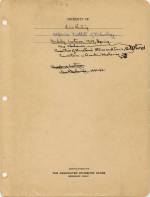| "Nobody Paid Any Attention" |
|
Their distrust of abstract thinking exceeded only by their ignorance of the new physics,
most early-1930s chemists responded to the Heitler-London-Slater-Pauling chemical-bond
ideas with a yawn. As chemical Nobelist Harold Urey recalled, they were "completely
bland about the matter, didn't understand it, and largely, except for Pauling, nobody
paid any attention to it."
But A. A. Noyes and G. N. Lewis made sure that Pauling's ideas were given a wide hearing
at Caltech and Berkeley, where most chemistry students developed an understanding
that this approach was important. A handful of the brightest began to follow Pauling
into the field. From the physics side, researchers like Slater and London continued
to refine the mathematics of blended wave functions, working out the structure of
simple molecules from physical first principles. Their impact on chemistry was muted,
however, because they had not mastered the huge masses of empirical facts important
to chemists, did not share the same worldview, and did not know which questions were
important.
|
|
Click images to enlarge

Linda and Linus Pauling with their pet cocker spaniel, "Til Eulenspiegel". 1934.

Berkeley Lectures. February - May 1929.
"Just as evolution is inseparably connected with Darwin (and not with Wallace, whose
paper on evolution prompted Darwin to write The Origin of Species), so too Pauling
and the chemical bond are tightly associated, and Slater's position, though important,
is secondary and supportive."
|

